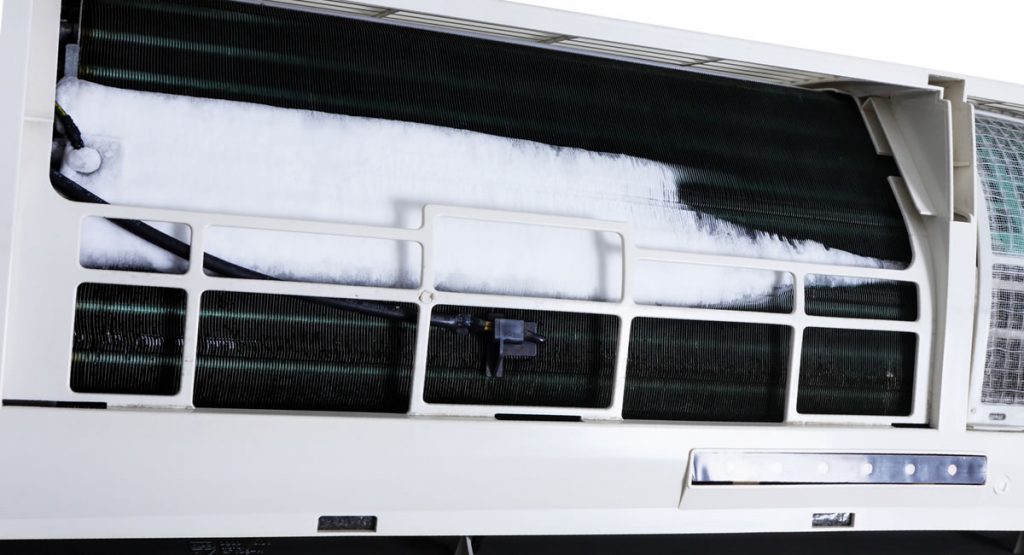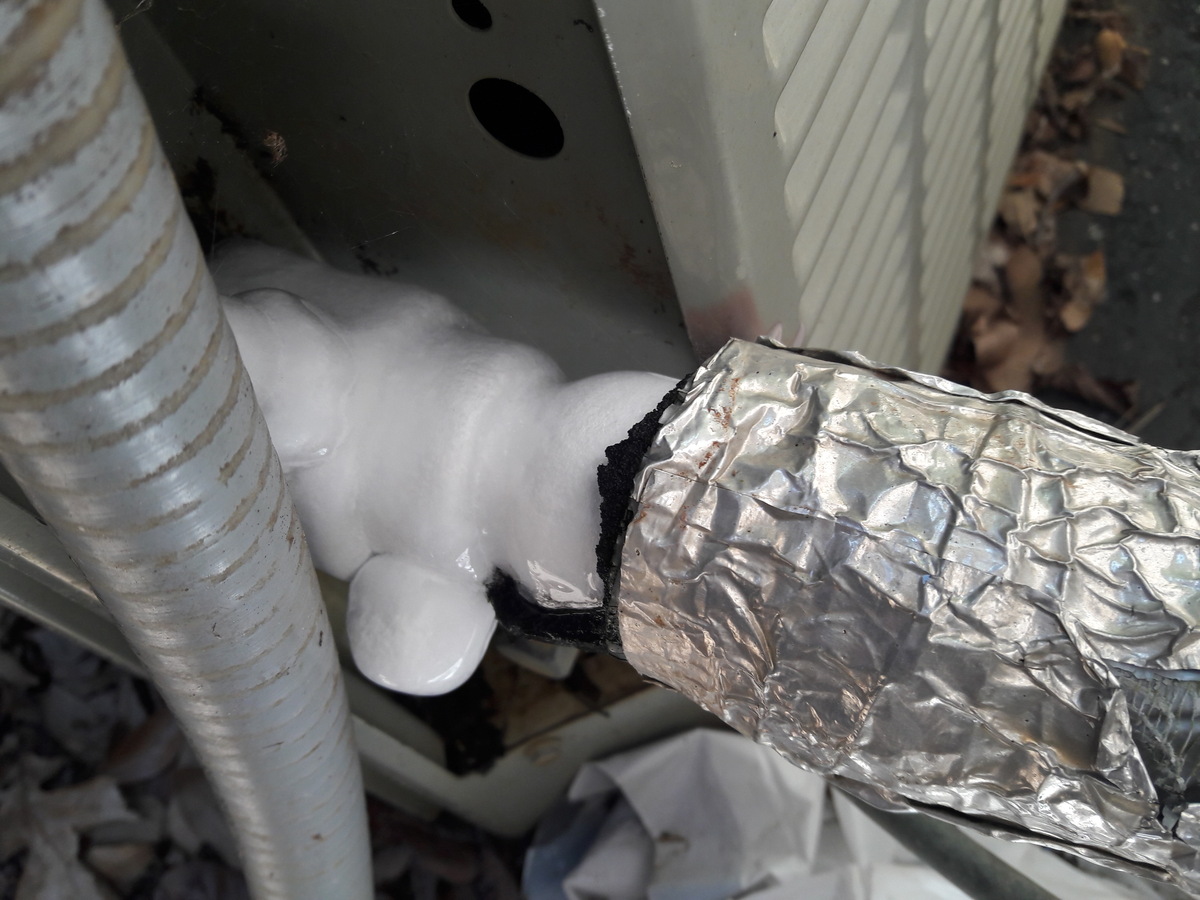How to Deal With a Frozen AC Pipe - Essential Steps for Recovery
How to Deal With a Frozen AC Pipe - Essential Steps for Recovery
Blog Article
The article which follows involving How can I fix an air conditioner’s frozen pipe? is relatively informative. You should take a look.

Introduction
Finding that your a/c pipe is frozen can be concerning, particularly during hot summer months when you rely on your a/c unit the most. Understanding what to do in such a situation is essential to prevent more damages to your cooling system and guarantee your comfort indoors.
Recognizing the Causes
A number of factors can add to the freezing of an AC pipeline. Understanding these reasons can aid you attend to the issue properly.
Lack of Airflow
One common cause of an icy air conditioning pipe is inadequate airflow. When the air movement over the evaporator coil is restricted, it can trigger the coil to drop below freezing temperature, causing ice formation on the pipe.
Reduced Refrigerant Levels
Inadequate cooling agent degrees in your air conditioning system can likewise cause a frozen pipeline. Low refrigerant levels can cause the stress in the system to drop, leading to the cold of wetness on the evaporator coil.
Winter Conditions
In colder environments, freezing temperature levels outside can add to the freezing of air conditioner pipes. If your air conditioning unit is not properly protected or if there are leakages in the ductwork, cool air can penetrate the system, causing the pipe to ice up.
Dirty Air Filters
Filthy or clogged up air filters can limit air movement in your AC system, leading to numerous problems, consisting of an icy pipe. It's necessary to replace or cleanse your air filterings system on a regular basis to make certain proper airflow and protect against ice buildup.
Indicators of a Frozen AC Pipe
Acknowledging the indications of an icy a/c pipeline is vital for timely action.
Reduced Airflow
If you see a substantial reduction in air movement from your vents, it could show a frozen pipe.
Ice Buildup on the Pipe
Visible ice buildup on the cooling agent line or the evaporator coil is a clear sign of a frozen air conditioning pipeline.
Odd Sounds from the Unit
Uncommon sounds, such as hissing or bubbling, originating from your air conditioning system can signify that there's ice present on the pipeline.
Immediate Actions to Take
When faced with a frozen air conditioning pipe, it's important to act promptly to stop more damages to your air conditioning system.
Switching off the air conditioner
The first step is to turn off your ac unit to stop the system from running and worsening the problem.
Checking for Blockages
Inspect the location around the indoor unit for any kind of blockages that may be obstructing air flow, such as furniture or drapes.
Thawing the Pipe
You can use mild methods like positioning towels soaked in cozy water around the frozen pipeline to aid thaw it gradually.
Preventive Measures
Taking safety nets can aid stay clear of future occurrences of a frozen AC pipeline.
Normal Maintenance Checks
Set up regular maintenance contact a specialist HVAC technician to guarantee that your air conditioning system is running effectively.
Changing Air Filters
Routinely replace or clean your air filters to prevent air movement restrictions and keep optimal performance.
Shielding Exposed Pipes
If your air conditioner pipelines are subjected to chilly temperature levels, consider insulating them to prevent freezing during winter months.
Looking For Professional Help
If DIY methods fall short to solve the problem or if you're not sure concerning how to proceed, it's ideal to look for aid from a qualified HVAC technician.
When DIY Methods Fail
If your efforts to thaw the pipe or address various other issues are not successful, it's time to contact a professional.
Relevance of Hiring a Professional HVAC Technician
A certified HVAC professional has the competence and devices required to identify and fix problems with your air conditioner system safely and efficiently.
Verdict
Taking care of a frozen air conditioning pipeline can be an irritating experience, but knowing exactly how to respond can assist lessen damages and bring back convenience to your home. By comprehending the reasons, acknowledging the signs, and taking timely activity, you can properly address the issue and avoid future incidents.
What to Do If Your AC Line Is Frozen
Make Sure All Supply and Return Air Vents Are Open
If you notice problems with airflow, the first thing you should do is check your supply and return vents. Supply vents distribute clean, conditioned air throughout your home. As this air becomes stale, it’s pulled into the return vent, where it’s reconditioned before being sent back out through the supply vent.
When these vents are closed, air won’t flow in the home. Before examining your AC, check the vents in every room and ensure they’re all open.
Check for a Dirty Air Filter
Another possible cause of limited airflow is a dirty air filter. Your air conditioner’s filters catch elements you don’t want to breathe in, such as dirt and dust. Over time, filters can become clogged, ultimately blocking air from flowing in and out. The lack of airflow can then cause the entire coil to freeze and will completely restrict any air from moving through it. The AC may need to be powered off for one to two days to allow the coil to thaw after replacing the filter to allow proper functioning of the unit. This debris can also accumulate on your AC’s evaporator coil, requiring a more serious repair. In general, air filters should be cleaned regularly (about every two weeks).
Assess Your Outdoor Unit
In addition to checking your AC, assessing the outdoor unit is a good idea. Also known as the condensing unit, it works with your interior unit to release heat outside. An issue with the outdoor unit can result in rising internal temperatures.
Overgrown Shrubs or Clogged Leaves
From leaves and twigs to shrubs and debris, there’s no shortage of outdoor elements that can accumulate around your condensing unit. When these elements get lodged inside the unit, they can block airflow. Fortunately, removing the blockage can solve the problem.
Sounds of a Broken Fan
Shrubs and leaves aren’t the only things that can impede your outdoor unit’s airflow. If the fan is broken, the unit won’t be able to properly get rid of heat — which means the internal temperature won’t go down. First, make sure the fan is spinning. If it is, check for the following sounds of a broken fan:
Buzzing Rattling Screeching Hissing Clicking Preventative Measures
Nobody wants to deal with a frozen AC line. In addition to causing problems with your air conditioner, they require professional repairs. On the bright side, there are preventative measures you can take to help ensure this issue doesn’t arise in the first place.
https://www.coopergreenteam.com/blog/what-to-do-if-ac-line-frozen

I have been very eager about Why Is Ice On My Outside Air Conditione and I hope you enjoyed reading the new page. Kindly take a moment to promote this entry if you appreciated it. We cherish reading our article about How can I fix an air conditioner’s frozen pipe?.
Call Today Report this page